Dominion (2023).mov
.mov.jpg)

is an interdisciplinary artist from Manila, Philippines.
I take my cue from the work of ↪Kiri Dalena in Snare for Birds. However, instead of editing the images, I would like to propose creating “alternative captions” for the museum’s photographic collection. The captions themselves would not be scholarly annotations, but creative texts. The end result would be a series of hybrid texts. This time, however, I won’t necessarily be the one writing. Another component of this project that I would like to introduce is the inclusion of other voices. I would like to host an art/writing workshop. The participants would come from marginalized groups, and what they would respond to would have to do with their background. I will go through the collection and identify themes and objects. Depending on what my research reveals, the selected photographs will be used by the writers as inspiration.
🔗 Vimeo
.mov.jpg)
[silence, or the sound of drowning]
[Caption reads: “Young Tagalog - Woman - Manila”]
I went through 3,700+ digitized photographs taken more than a century ago.
On my computer, on my tablet, I looked at, scrolled up, down, pressed, swiped left, right. Not yet pored through.
I made a list of possible subjects… “to study.” Something impossible. Or at least not possible to bear alone.
Here, a partial and incomplete list of metonyms, notes and impressions:
(not in the order in which they were cataloged by the museum or not in the order that I saw them)
White cloth —
Decontextualizing “jungle.” Or is it to make whiteness the context?
There were pictures where people and objects looked as if they were floating.
The grass on the ground, peeking out of all of that white
This reminds me of the branch someone obviously used to cover their private parts…
In this picture, it was on the ground.
Theirs?
Ours?
The proverbial: rice terraces, planting rice, unpaved roads, women bathing in a body of water
White man, small brown man, small brown woman
The class picture, the conversions, the lines, the soldiers, the western clothes
There were these weird, floating contraptions… Some were looms, actually. For weaving.
Boats, baskets, skulls, jars
Deformed mountain feet, deformed mouth
A woman with albinism, a mestiza, a white woman (the wife of an official)
Mother and child. Children.
About the skull– I saw this picture while I was in bed. It showed the face of… It was an Aeta.
Their head was rotten. Rotted? Cheeks were sunk, but their hair was still intact.
Part of the caption read “… in the condition in which it was taken from a grave.”
I was trying to fall asleep.
I saw it again the moment I closed my eyes.
I went to the bathroom to wash my face, and / but there was a cockroach in the sink.
I tried to get it out. But then its limbs detached…
Apparently, I just learned, they can regrow their limbs?
Then the cockroach slipped into the drain.
Sometimes I wonder if it’s still stuck there.
I find adverbs of frequency interesting these days.
I was at a popular beach destination recently. To vacation. To vacate. I vacated.
I had no idea it’s that commercialized there now. Like, what?
Everything’s convenient and expensive.
(Inside voice) But the food was amazing. The mango shake…
Wait, I forgot to tell you —
About this mango I ate one morning at the start of the year?
It was the size of my hand. A third of my face!
After I washed it, I pinched it near its beak. Ripped its skin, peeled it counter-clockwise.
I took a bite of the soft meat and it engulfed me back.
Not me— I mean, my nose, my cheeks, my mouth.
But not my eyes and my ears, certainly not my shoulders, my knees and my toes. Haha.
Wait. Can I say that?
[ . . . ]
Yellow, sticky juice dripped from my mouth, trickled down my hands and elbows.
The kitchen table was wet.
There were pictures of mouths, too. Of a man, deformed. Of rivers. Something about a ritual.
I thought, “This is a mango.”
A mango among mangoes. The mangoest of them all. The epitome of a fruit.
“This is a mango.”
It was so sweet and delicious.
But on my last bite, it tasted sour.
But going back to the island…
The bodies of men and women and children.
A headless body tied to poles. Multiple pictures of it being carried, and
thrown into a ditch. The gashes on its body. The fact of his headlessness.
Another dead man. Wounded by a tulisan.
Another dead man. A dead tulisan.
Numbers written on paper stuck to people’s chest and arms.
Unrelated, possibly, also: prisoners of a provincial jail.
A car. A flute and other musical instruments
The pictures of a group of people in front of a phonograph were not in this collection, unfortunately.
This one.
But there were pictures of those who impersonated
“God the Father, God the Son, the Holy Ghost, the Virgin Mary, etc.”
Etc., etc.
Field crops, mountains, vintas, sultans, soldiers
Smiths, seamstresses, millers, pointed teeth, distortions, deformities
(not alphabetical, clearly, not exhaustive)
Funerals.
“a grave tunneled into the hillside”
Some people were naked because they were naked.
Some were forced to wear their nakedness. You can see it in their faces.
In the way they bent their arms or slightly turned their hips.
Women and girls unclothed. Covering their breasts. Standing.
Just standing there.
The slit of their girlhood.
The men and boys, too… were undressed.
Everybody.
Even the land.
The photographs I liked the most were the ones with blurry faces. They were not still enough.
And this one of the pearl diver in a diving suit.
In the island, I entered this cave…
It led to water. Of course. And I jumped.
Sometimes I think about our right to be forgotten.
List of Images Used - 78 Total
*WIP shown in December 2022 at Asian Artist Moving Image Platform (AAMP)’s 4th Forum Festival 2022 - Symptom, Index, Speculation, via Los Otros
https://www.dekolonyalidad.org/
[Live and so far contains only the call for submissions]
Draft - List of Impressions, Metonyms, Marginalia, Decomposition (after going through every photograph without reading the captions)
The white cloth / backdrop
Western clothes
Mother and child
Front, side, front, side
Native clothing, western clothing
Women clothed
Women in bathing in the river (“three maidens”)
Some clothed, some bare breasted
Nudity and exploitation of bodies
Death and burial
The Bilibid prisoners (there’s also this scientist from the Bureau of Science who studied bodies, weighed their brains, etc.)
Weaving implements (these contraptions are beautiful)
Baskets (proverbial)
Cloth covering
Genitalia (gratuitous)
The slit of their girlhood (what need was there to subject these girls to that?)
Spanish mestizas
Towns, unpaved roads
Rice terraces (proverbial)
Sports and schooling, class photographs
A man— or a body tied to poles. Multiple shots of the body being carried and thrown into a ditch. The gashes on its body. The fact of his headlessness.
A head of an Aeta; a skull of. The hair was still intact, but the cheeks… the face was disintegrating (this image haunts me; it popped up in my head while I was trying to fall asleep the night I saw the photograph)
Candid, out of focus photographs (i love that those people moved, and so were not ‘captured’ by the “evil eye”)
A naked man
A naked woman
Three naked women bathing in a body of water
Clothes on the floor
More naked women than naked men. Not the fact of nakedness but that they are women. A handful of men showing their genitalia.
Frontal. Side.
White background
White cloth background the grass peeking out from the ground
Before and after. Western clothed.
Paper with a number on men’s chest or arm. Also women.
Floating in white space.
White woman with an indigenous woman. Who is this? (The wife of an American official?)
Girls covering their breasts
Floating hands and feet
Floating contraptions, baskets, skulls
Leaves down on the ground so we see their genitalia. Girls
Girls with no clothes whatsoever, just standing there.
…
[tbc]
In a previous research I completed a couple of years ago, I explored how indigenous peoples were represented in select oil paintings during the American Colonial period in the Philippines, in the early half of the 20th century. The paintings bore resemblance to how Filipinos were represented in texts – photographs, postcards, articles, etc. that were used to aid in civilizing and colonizing projects. What I wanted to do then was to ‘give back’ ‘power’(?) to those Othered. But writing about them eventually felt disingenuous as I am not from a minority group, an Othered group. And it soon felt like I was trying to speak/assume on their behalf and that didn’t sit right with me.
One of the lessons of that time was to engage with other people. This is one of the things I would like to do for this project. (But how? To follow.)
I am here not unaware of my subjecthood. And I think this is me making strides to reconcile with the ambivalence of my being a postcolonial subject. (There is a lot to say about this, but for another time.)
For now I would like to state that I am approaching this project with the ff. in mind:
the researcher/writer/artist, a.k.a. me, as human
knowing/learning histories
sharing, stories and knowledges
focus on learning and asking questions, not ‘solving’
experimental, non-formal, non-academic [?], interdisciplinary, process-based, non-rigid
alternative methods, e.g. “friendship as method”
This project could also be an exercise in decolonization? decoloniality? Something to do with slow and consistent learning and unlearning of the inherited effects of colonization.
Questions about The Worcester Photographs and RJM’s Collection
How many unique images are there from all the collections scattered in different archives? Not all prints have glass plates and not all glass plates have prints.1
What made Worcester select these 3,700+ photographs to sell those to Küppers-Loosen?
Re: frequency. In the RJM collection, which locales and what subjects are most photographed? (Northern Luzon and Aetas?)
What if all the institutions holding these photographs pool all of the images to figure out the total number of unique images. I’m pretty sure there’s an app for this. And then captions can also be compared. Captions found in the original photographs themselves, and the captions written by those who have cataloged the works. That might be interesting.↩︎
"Americanista"
"grave tunneled into the hillside" (7231, …)
"in the condition in which it was taken from a grave"
Agriculture and Food
Doeppers' "Feeding Manila in Peace and War, 1850–1945"
Bangsamoro / Mindanao
Basi
Cabaruan (9150, 9151) - !
Earthen Jars (8784), Porcelain Jars
Education, Calisthenics, School Buildings, Etc.
Felizardo/Felizarda
[pending meeting with a granddaughter of a felizardo]
Illnesses and Deformities
Balse's "Body Parts of Empire: Visual Abjection, Filipino Images, and the American Archive"
Looms and Contraptions
Mouths (of Rivers) (10146, 8448)
Mrs. Jenks
Sianturi's "At Home in the Cordillera Wilds: Colonial Domesticity in the Letters of Maud Huntley Jenks, 1901-1903"
Pearl Diver in Suit (8793, 8794)
Pointed Teeth
Prisoners at the Provincial Jail
Proper Nouns
Remontado
Rituals, Beliefs, Offerings (9190, 8448)
Smithing, Weaving, Millinery, and Other Industries
Afable, Patricia O. “Journeys from Bontoc to the Western Fairs, 1904-1915: The”Nikimalika" and their Interpreters." Philippine Studies 52.4 (2004): 445-473.
Barrows, David P. A Decade of American Government in the Philippines. New York: World Book Company, 1914.
Best, Jonathan. A Philippine Album: American Era Photographs, 1900-1930. Makati: Bookmark, c1998.
—. “Postcards from the Edge.” Philippine Star. 28 July 2009. 6 April 2014. http://www.philstar.com/lifestyle/490469/postcards-edge.
—. “The Way We Were.” Philippine Star. 10 August 2003. 6 April 2014. http://www.philstar.com/starweek-magazine/216749/way-we-were.
Bhabha, Homi K. “Of Mimicry and Man.” The Location of Culture. New York: Routledge, 1994. 85-92. Book.
Boxer codex. ca. 1590. Manuscript.
Brody, David Eric. “Fantasy Realized: The Philippines, Orientalism, and Imperialism in Turn-of-the-Century American Visual Culture .” Unpublished [?], 1996.
Buangan, Antonio S. “The Suyoc People Who Went to St. Louis 100 Years Ago: The Search for My Ancestors.” Philippine Studies 52.4 (2004): 474-498.
Ciriaco, Conrado F. Catalogue of Philippine Picture Postcards: American Period: 1898 to 1941. Manila: Conrado F. Ciriaco, 1995.
Fermin, Jose D. 1904 World’s Fair: The Filipino Experience. Quezon City: University of the Philippines Press, 2004.
Foreman, John. The Philippine Islands: A Political, Geographical, Ethnographical, Social and Commercial History of the Philippine Archipelago Embracing the Whole Period of Spanish Rule with an Account of the Succeeding American Insular Government. 3rd Edition. New York: C. Scribner’s Sons, 1906.
Halili, Servando D., Jr. Iconography of the New Empire. Quezon City: UP Press, 2006. Hiddleston, Jane. Understanding Postcolonialism. Stocksfield: Acumen, 2009. Book.
Holt, Elizabeth Mary. Colonizing Filipinas: Nineteenth-Century Representations of the Philippines in Western Historiography. Quezon City: ADMU Press, c2002. Book.
Labrador, Ana M. “The Representation of Bontok Identity in Museums and in Central Bontoc, Northern Philippines.” Unpublished Ph.D. dissertation, Gonville and Caius College, 1998.
Macfie, A.L. Orientalism. London: Longman / Pearson Education, 2002. Book.
McCoy, Alfred. Philippine Cartoons: Political Caricature of the American Era, 1900-1941. Quezon City: Vera-Reyes, c1985. Book.
Mignolo, Walter D. “Introduction: Coloniality of Power and De-Colonial Thinking.” Globalization and the Decolonial Option. Ed. Walter D. Mignolo and Arturo Escobar. New York: Routledge, 2010. 1-21. Book.
Mignolo, Walter. Interview - Walter Mignolo / Part 2: Key Concepts Alvina Hoffman. E-International Relations, 21 January 2017. https://www.eir.info/2017/01/21/interview-walter-mignolopart-2-key-concepts/.
Patacsil, Pareto Oliver B., II. “Post Colony: Philippine Postcards of the American Occupation Period (1898-1941).” Unpublished M.A. thesis, University of the Philippines-Diliman, 2004.
Quizon, Cherubim A. and Patricia O. Afable. “Guest Editor’s Introduction: Rethinking Displays of Filipinos at St. Louis: Embracing Heartbreak and Irony.” Philippine Studies 2004: 439-444.
Quizon, Cherubim A. “Two Yankee Women at the St. Louis Fair: The Metcalf Sisters and their Bagobo Sojourn in Mindanao.” Philippine Studies 52.4 (2004): 527-555.
_. “Ethnographic knowledge and the display of Philippine Igorots in the Louisiana Purchase Exposition, 1904.” Unpublished M.A. thesis, State University of New York at Stony Brook, 1991.
Rafael, Vicente. White love and other events in Filipino history. Quezon City: Ateneo de Manila University Press, 2000. Book.
Rodriguez, Mary Jane B. “Reading A Colonial Bureau: The Politics of Cultural Investigation of the Non-Christian Filipinos.” Social Science Diliman 6.1 (2010): 1-27.
Said, Edward. Orientalism. London: Penguin Classics, 2003.
Sakili, Abraham. “Sustaining Sulu People’s Identity of Power, History and Culture through Their Visual Arts.” 2008. PDF. 7 December 2013. http://philippineculture.ph/filer/toledo-cebu/paper-SAKILI-Sustaining-Sulu-People's-Identity.pdf.
Sawyer, Frederic Henry Read. The Inhabitants of the Philippines. London: Sampson Low, Marston, 1900. Book.
Smith III, Winfield Scott. The Art of the Philippines 1521-1957. Manila: Associated Publishers, 1958.
Talusan, Mary. “Music, Race, and Imperialism: The Philippine Constabulary Band at the 1904 St. Louis World’s Fair.” Philippine Studies 52.4 (2004): 499-526.
Tatel, Carlos P., Jr. “Anthropology and Sociology at UP: Lessons from an Academic Union, 1914-1951.” Philippine Sociological Review January-December 2014: 111-136.
Thomas, Megan C. Orientalists, Propagandists, and Ilustrados: Filipino Scholarship and the End of Spanish Colonialism. Minneapolis: University of Minnesota Press, 2012. Book.
Thompson, Krista A. "“Black Skin, Blue Eyes”: Visualizing Blackness in Jamaican Art, 1922-1944." Small Axe 8 (2004): 1-31.
Vergara, Benito, Jr. Displaying Filipinos: Photography and Colonialism in Early 20th Century Philippines. Quezon City: University of the Philippines Press, 1995.
Worcester, Dean Conant. The Philippine Islands and Their People: A record of a Personal Observation and Experience, with a Short Summary of the More Important Facts in the History of the Archipelago. New York: Macmillan, 1909, c1898.
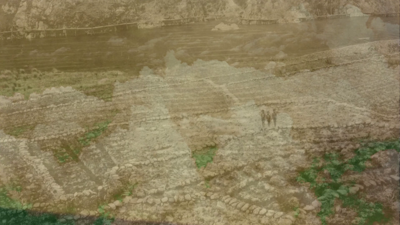
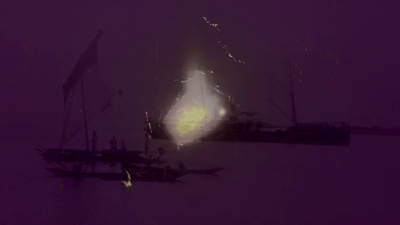
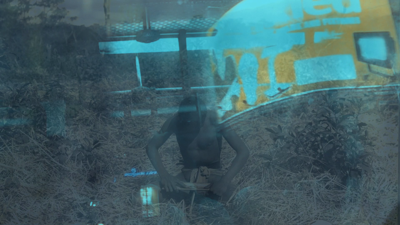
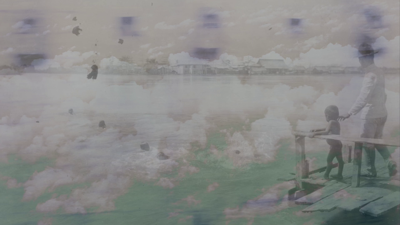
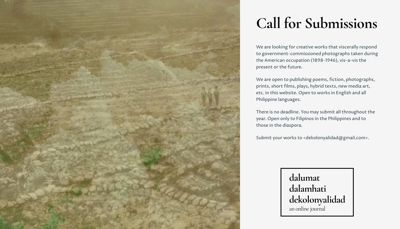

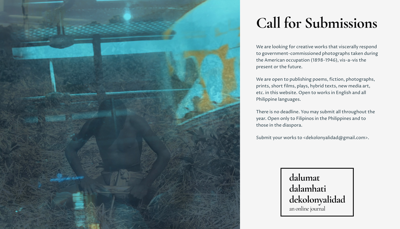
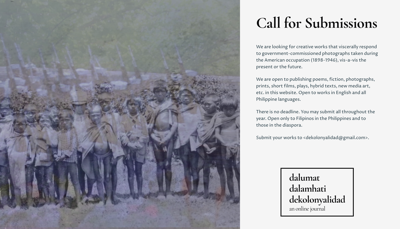

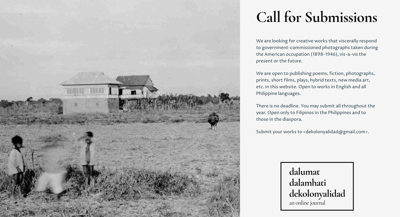
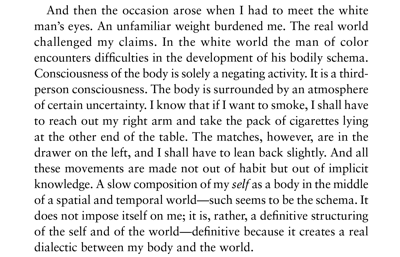

.pdf.jpg)
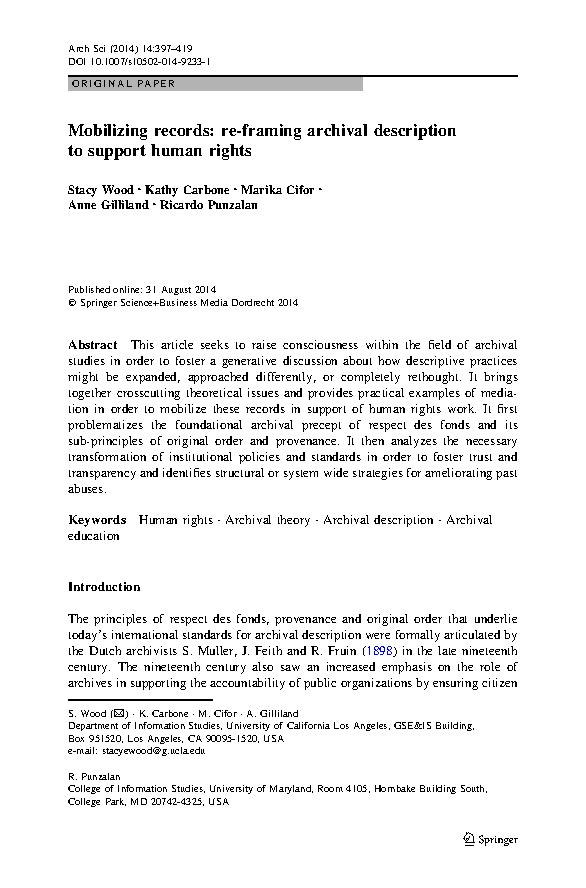
.pdf.jpg)
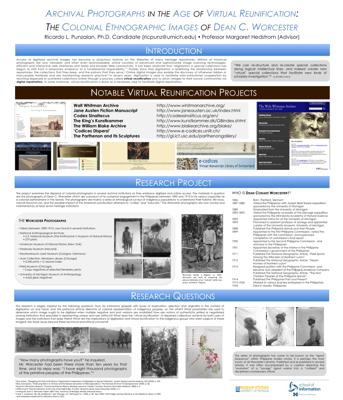
, vol 1, no 8.pdf.jpg)